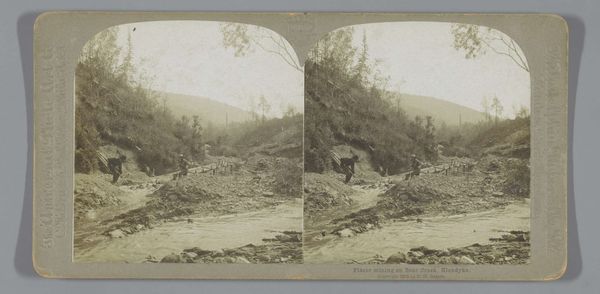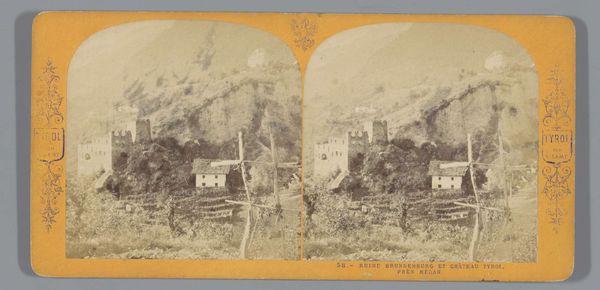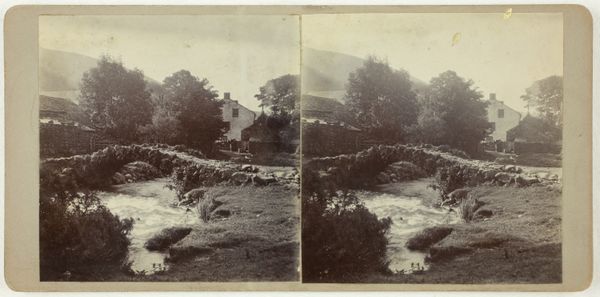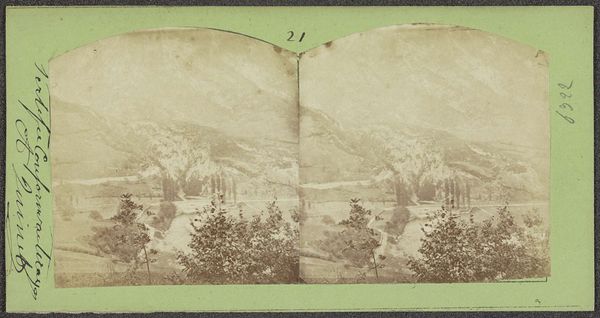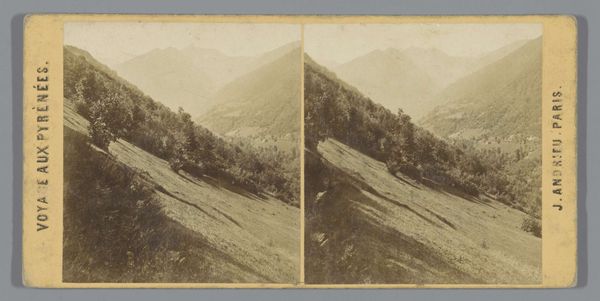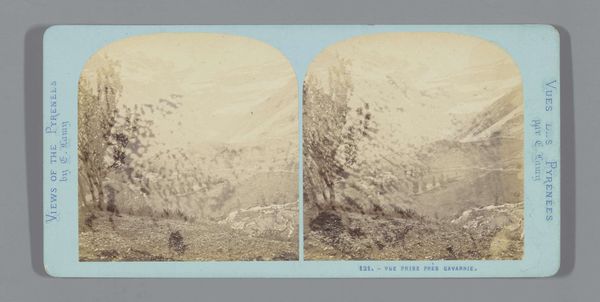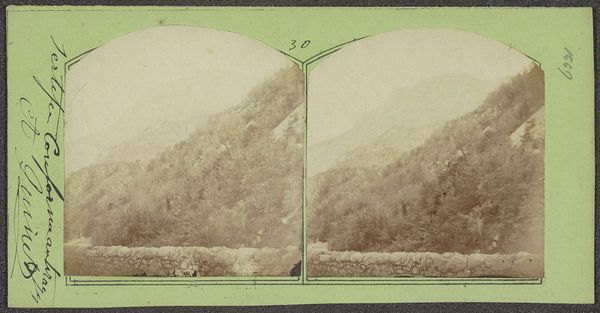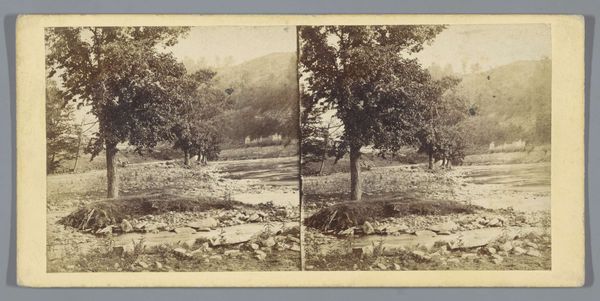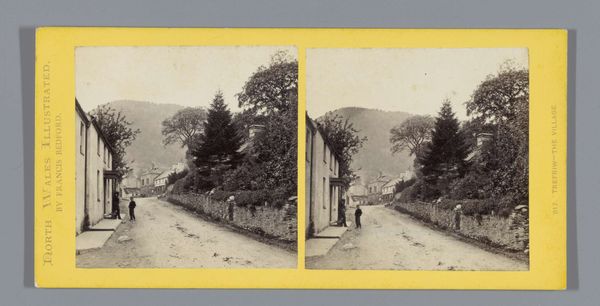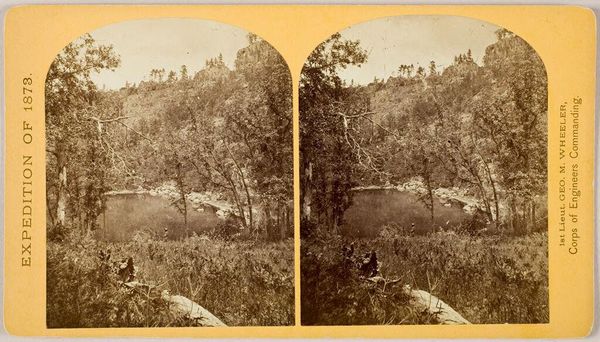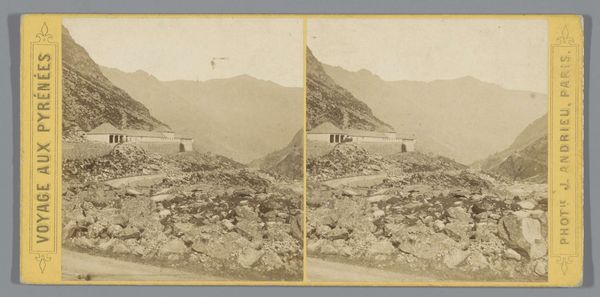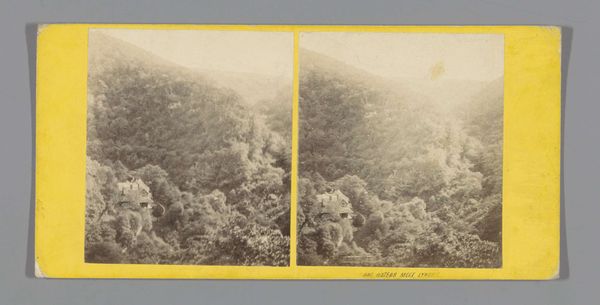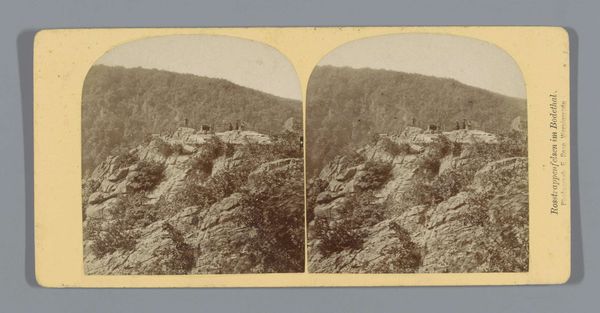
Dimensions: height 85 mm, width 170 mm
Copyright: Rijks Museum: Open Domain
This stereo card, "Gezicht op Ruhla," was created by Laurentius Herzog sometime in the late 19th century. The monochromatic sepia tones evoke a sense of nostalgia and distance, characteristic of early photographic processes. Consider how the composition is structured through a deliberate arrangement of natural and human elements. The valley of Ruhla is framed by a foreground dominated by an ascending slope where figures are resting under the sparse tree. This creates a clear distinction between the foreground and background, yet it is also unified through tonal harmony. The repetitive form of the duplicated image invites a semiotic reading, where each element functions as a signifier. The figures, the trees, and the distant settlement come to act as markers of human presence within the landscape. As you consider this image, think about how each element—the tones, the composition, and the duplicated perspective— contributes to a complex interplay of observation and representation. Photography has always been a space where art and reality converge.
Comments
No comments
Be the first to comment and join the conversation on the ultimate creative platform.
